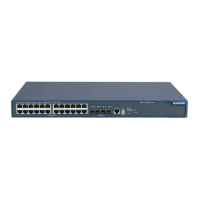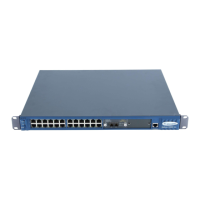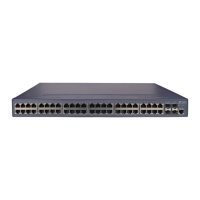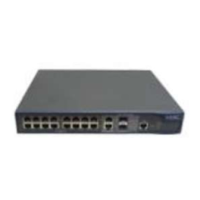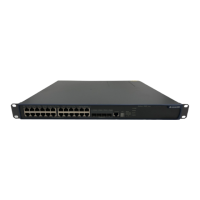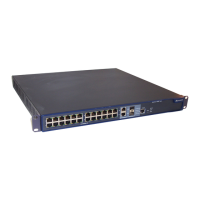Operation Manual – VRRP
Quidway S3900 Series Ethernet Switches-Release 1510 Chapter 1 VRRP Configuration
Huawei Technologies Proprietary
1-5
III. Configuring preemptive mode for a switch in a backup group
As long as a switch in the backup group becomes the master switch, other switches,
even if they are configured with a higher priority later, do not preempt the master switch
unless they operate in preemptive mode. The switch operating in preemptive mode will
become the master switch when it finds its priority is higher than that of the current
master switch, and the former master switch becomes a backup switch accordingly.
You can configure an S3900 series switch to operate in preemptive mode. You can also
set the delay period. A backup switch waits for a period of time (the delay period) before
becoming a master switch. Setting a delay period aims at:
In an unstable network, backup switches in a backup group possibly cannot receive
packets from the master in time due to network congestions even if the master operates
properly. This causes the master of the backup group being determined frequently.
With the configuration of delay period, the backup switch will wait for a while if it does
not receive packets from the master switch in time. A new master is determined only
after the backup switches do not receive packets from the master switch after the
specified delay time.
IV. Configuring authentication type and authentication key for a switch in a
backup group
VRRP provides following authentication types:
z simple: Simple character authentication
z md5: MD5 authentication
In a network under possible security threat, the authentication type can be set to
simple. Then the switch adds the authentication key into the VRRP packets before
transmitting them. The receiver will compare the authentication key of the packet with
the locally configured one. If they are the same, the packet will be taken as a true and
legal one. Otherwise it will be regarded as an illegal packet and be discarded. In this
case, a simple authentication key should not exceed eight characters.
In a vulnerable network, the authentication type can be set to md5. The switch then
uses the authentication type provided by the Authentication Header, and MD5
algorithm to authenticate the VRRP packets. In this case, you need to set an
authentication key comprising up to eight characters or a 24-character encrypted
string.
Packets that fail to pass the authentication are discarded. The switch then sends trap
packets to the network management system.
V. Configuring VRRP timer
The master switch advertises its normal operation state to the switches within the
VRRP backup group by sending VRRP packets once in each specified interval
(determined by the adver-interval argument). If the backup switches do not receive

